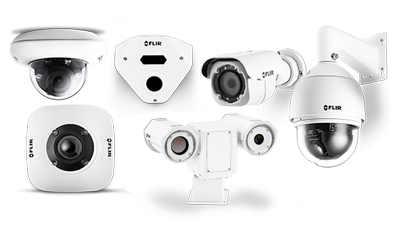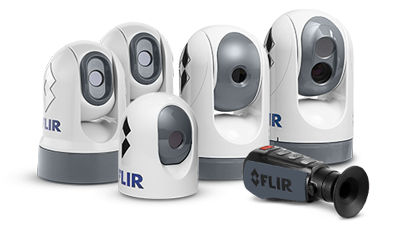Marine Pollution Detection System
Marine Pollution Detection System
We are very proud and happy to have signed an important project for our country at a time when marine pollution has increased so much. With the system on a bridge for the first time in the world, sea pollution caused by ships will be detected and our seas will be kept clean. Thanks to ICA and İTÜBOA for enabling the project. I hope we start to see the benefits as soon as possible.
ICA will protect the Bosphorus from ship-borne pollution with the "Marine Pollution Detection Project"
ICA will detect pollution from ships by using remote sensing technologies, with the "Development of Marine Pollution Detection, Tracking and Analysis System from Ships for the Northern Region of the Bosphorus". The remote monitoring system used in the project, which contributes to the protection of the marine environment, coastline and human health and was implemented with the scientific support of the Istanbul Technical University Turkish Straits Maritime Application and Research Center, was installed on a bridge for the first time in Turkey and in the world.
ICA, the company of IC İçtaş İnşaat, which undertook the construction and operation of Yavuz Sultan Selim Bridge and Northern Ring Motorway, has initiated the "Marine Pollution Detection Project for the Northern Region of the Bosphorus", which it has initiated in line with its sustainability-oriented business approach, to ensure that the marine environment and the coastline in the Bosphorus are protected. and aims to protect human health. In the project, which was realized with the scientific support of Istanbul Technical University Turkish Straits Maritime Application and Research Center, pollution from ships will be detected using remote sensing technologies.
The remote monitoring system used was installed on a bridge for the first time in the world.
The remote monitoring system used for the project was installed on a bridge, Yavuz Sultan Selim Bridge, for the first time in the world, and started to be used. Within the scope of the project, the northern side of the Yavuz Sultan Selim Bridge will be continuously scanned by means of the software necessary for tracking, and the pollution will be detected by monitoring the ships entering and leaving the Black Sea in a 2.5-kilometer area. The system will be monitored by the General Directorate of Coastal Safety, the Coast Guard Command, the relevant units of the Istanbul Metropolitan Municipality and the Istanbul Technical University Turkish Straits Maritime Application and Research Center.
“We will provide sustainable protection for the people of the region, the marine environment and the coastline”
Providing information about the project, ICA General Manager Serhat Soğukpınar pointed out that the Bosphorus, which is one of the most important waterways in the world, is the most important passage connecting the Black Sea basin to the Mediterranean and other important waterway basins. Sogukpinar said: “In recent years, the cargo volumes of ships passing through the Bosphorus have increased significantly. In particular, the frequency of transit of tankers and the increase in oil and chemical cargoes carried through the Bosphorus increase the risk of pollution of this important waterway by oil and its derivatives. Marine pollution originating from ships, detection and prevention of this pollution is of great importance for the environment and human health. With the “Istanbul Strait Marine Pollution Detection Project”, we aim to minimize the negative effects by providing the most appropriate response equipment/methods to the pollution after the pollution is detected immediately with the systems that detect the pollution in the northern part of the Bosphorus.”
Emphasizing that within the scope of the project, which they started with the awareness of their responsibilities towards Istanbul and all of Turkey, the control center was established in the Main Control Center, where ICA monitors the entire highway and bridge 24/7, Soğukpınar said, “The type of pollution with equipment such as the camera and radar system installed for the project, its spread and dimensions can be estimated, and the results and effects of pollution will be analyzed and reported. Most importantly, we will provide sustainable protection for the people of the region, the marine environment and the coastline. The dynamic data to be obtained will also contribute to scientific studies.”
ITU Turkish Straits Maritime Application and Research Center Director Prof. Dr. Özcan Arslan, on the other hand, made an evaluation about the project, “Due to its special structure, it is very important for us to protect all our seas, especially our Straits and Marmara Sea. In order for our seas to survive, it is necessary to detect all kinds of pollutants, to intervene in pollution and to prevent similar pollution. Thanks to this system installed on Yavuz Sultan Selim Bridge, instant information flow about pollution will be provided to all stakeholder organizations in a synchronized manner. In this way, when a possible pollution from ships arises in the region, both the polluting ships will be easily detected and the pollution intervention will take place very quickly. In many cases, even knowing the existence of the system will act as a deterrent on its own. In developed countries, similar systems are implemented and pollution is prevented quickly, especially by means of various penalties and strict sanctions. As ITU Turkish Straits Maritime Application Center (ITUBOA), we are proud to play a role in the development of such a project. Allocating a significant budget to the project, ICA fulfilled a very important social responsibility. As İTÜBOA, we will use the data we obtain from here in our academic studies. In addition, additional benefits such as search and rescue activities and maritime traffic planning will be provided from the project. Our project actually has a multiplier effect in that it is synchronized with all stakeholders, including academia. Therefore, we can position it as a 'spark' project. After all, with the installation of these systems at critical points in the Turkish seas, we will have done a very important service for the protection of our seas.” said.
About the system used
The SeaCOP system used in the "Development of the Marine Pollution Detection, Tracking and Analysis System from Ships for the Northern Region of the Bosphorus Project" is a unified command and control software that combines multiple sensors and platforms on a map-based basis to create environmental awareness and supports the operator to analyze and make decisions. The system is currently used by the Norwegian Coastal Administration. It is also established in Azerbaijan for the detection of surface and underwater pollution in the Caspian Sea and the control of the pipeline.






